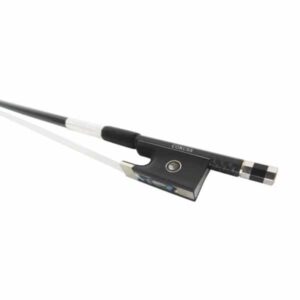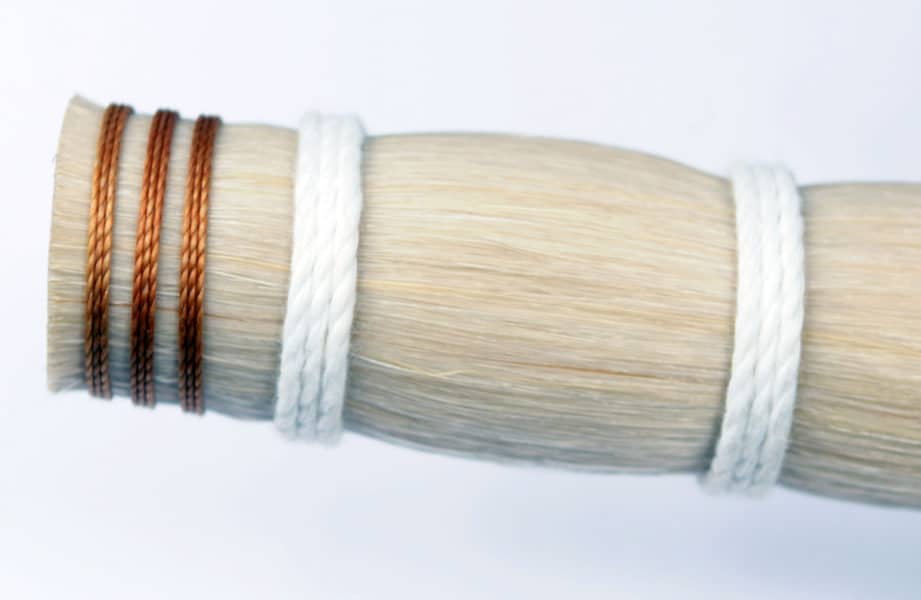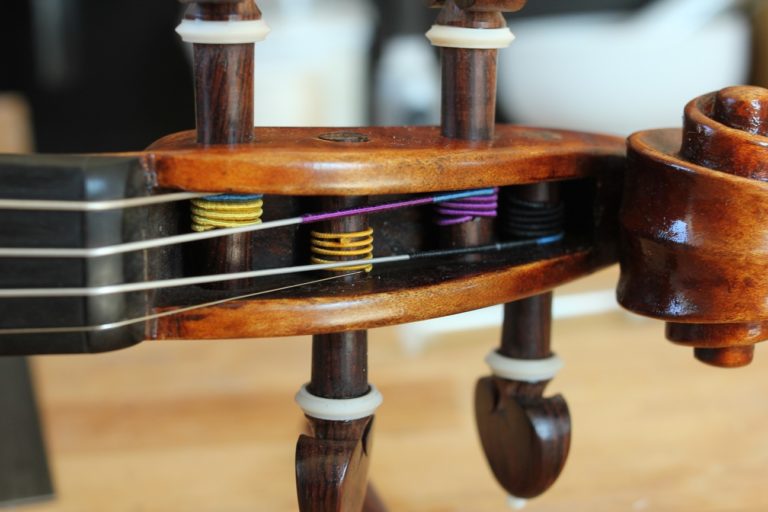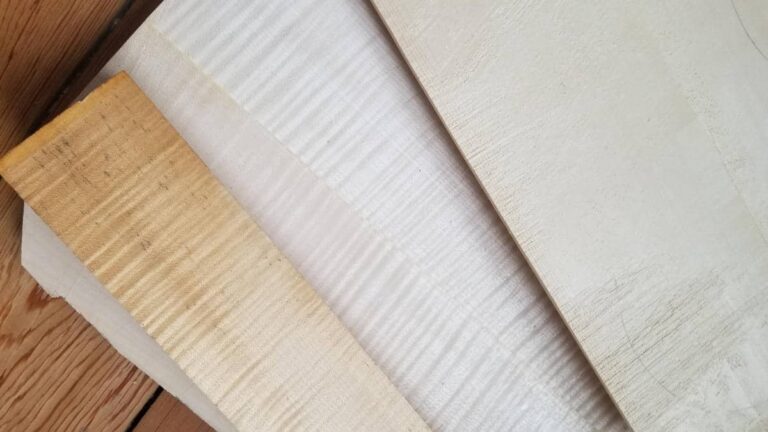The violin, often heralded as the king of instruments, tends to steal the spotlight. But what would a violin be without its loyal companion, the bow? Bow hair is the core of the instrument’s vibration and is thus vital to the virtuoso’s performance. In this article, we will focus on the place where the sound spark occurs and observe the essentials of bow hair, from selection to stringing. From the expansive Asian grasslands to prestigious concert halls, discover the incredible journey of these unique tresses.
The careful selection of bow hair
Although not always the case, bow hair is typically of animal origin. In fact, these hairs are taken solely from certain breeds of horses that live in very specific climates. That said, the hair on your bow actually went through an extremely rigorous selection to end up where it is.
Unique horse hair
[pullquote align=”right”]
Your bow hair has gotten off its high horse. Still, you’d better treat it right!
[/pullquote]
Bow horsehair typically comes from horses bred in Mongolia and Siberia, and sometime even Canada. Due to the frigid climates of these parts of the world, the native horse breeds are particularly hardy and have thick, resistant manes and tail hair. In more temperature climates, even the toughest purebred horses do no produce such thick hair.
The best hair used in bow making comes solely from stallions. In fact, the tail hair from mares cannot be used at all, as the hair deteriorates due to how they urinate.
Furthermore, it takes around 15 years for a horse tail to reach the suitable length to fit a bow (must be at least 80 cm long). Older horses in good health can have tails that measure up to 150cm long!
The way the hair grows is also important. Just like human hair, the fibers are older at the ends than at the roots. Therefore, when stringing the bow, we place the strongest part of the hair (the roots) at the frog, the part of the bow that will sustain the most wear and tear.
More on stallion hair
Though stallion hair is supposed to be the only hair suitable for bow making, it’s very difficult to obtain. Tail hair from horses raised on breeding farms is considered a by-product of meat and dairy industries. In these industries, mares are more valuable, as they are capable of reproducing and are utilized for milk and horse meat. On the contrary, stallions serve are merely studs, and are not as useful as the females.
Take for example bovine breeding in Europe: only one bull is selected for its genetic aptitudes to breed with all the females in the herd. The same goes for stallions. Thus it is fairly rare that a stallion avoids the slaughterhouse to become a stud horse.
According to some bow makers, it is for this very reason that it is rare to obtain actual stallion tail hair.
A particular hair color
[pullquote align=”right”]
Less than 5% of the tail hair collected (white or beige) can be used for bow hair.
[/pullquote]
As if choices weren’t limited enough, only three colors can be used for bow hair:
- White
- Salt and pepper
- Black
Generally speaking, the darker the hair, the sturdier it is, hence ensuring a better adhesion on the low strings. White hair is more delicate and is thus principally used on violins, violas, and cellos. Black tail hair is almost exclusively used for bass bows. Salt and pepper hair is a nice compromise between the two for certain musicians.
In bow making, the best bow hair is never dyed or bleached. That’s why if you look closely, you can spot some color variations in the hair. However, certain low-quality bows use hair that has been chemically processed. Violin makers and musicians are typically against chemical processing, as it significantly affects the quality of the hair.
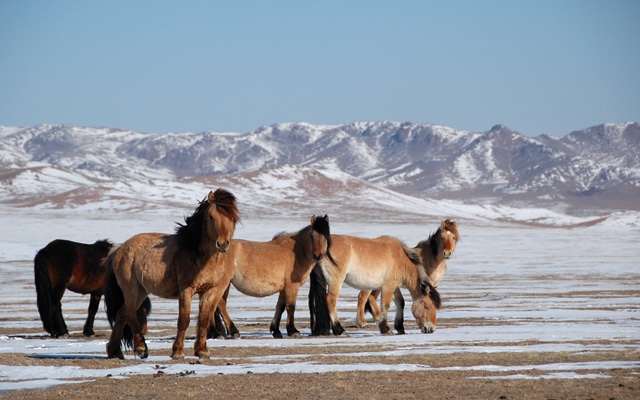
Only certain hairs will be chosen
[pullquote align=”right”]
The hair on our bows comes from slaughterhouses, not from livestock. It’s an agribusiness by-product: Mongolia produces 12kg of horse meat per inhabitant each year, whereas France produces 110g per inhabitant each year.
[/pullquote]
Once the hair has been collected, workers examine each strand and sort them by color, length, and quality. At the end of this thorough inspection, most of the hairs are rejected. For one horse tail, only about 50g of the hair is selected, which is enough to string approximately five bows. If there are really obvious flaws on some strands, they are immediately deemed unusable. However, even if certain imperfections are obvious, the luthier or bow maker must always verify the quality of the hair one last time before rehairing.
Only a minute percentage of horse tail hair is used for bow making. The majority of tail hair is used by artisans in the creation of objects such as:
- Furniture and bedding
- Woven jewelry
- Clothing
- Textiles
- Brushes (all types)
- Raku ware
- Fish bait
How the hair is selected
[kad_youtube url=”https://www.youtube.com/watch?v=dac8_g0UNnY”]
The art of bow making
Bow hair does not last forever. As I explain further in the article, When should you rehair your bow?, you need to replace the hair from time to time. Once we realize how critical bow hair is in the sound quality of our string instrument, we become immediately demanding about who will be responsible for rehairing. It is indeed futile to take your bow to a music store, so you really will need to find a luthier or bow maker who is skilled at this craft. However, not all luthiers and bow makers offer bow rehairing services.
Nevertheless, you can take control of the process. It will perhaps be difficult to understand all of the ins and outs of each type of hair, but don’t be afraid to try different options. You might be surprised by the result. And if all else fails, you can always consult a professional at a workshop near you.
Feel free to share your experiences in the comments section!
Synthetic bow hair
Synthetic fibers are a new alternative to natural tail strands. However, they are not to everyone’s taste, and are are arguably of lower quality than animal tail hair. However, just like carbon instruments or bows, synthetic strands simply offer another option, and their stability and consistency tends to interest many musicians.
Additionally, animal rights advocates will surely welcome the opportunity to use a non-animal-sourced product for the rehairing of their bow. If you would like to learn more about synthetic bow hair, check out the brand Coruss.
